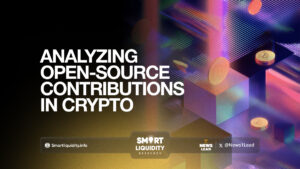Global Blockchain Spending on the Rise


Blockchain technology, the secure and transparent distributed ledger system underpinning cryptocurrencies, has captured the imagination of entrepreneurs and investors worldwide.
While the cryptocurrency market itself has experienced volatility, the underlying technology of blockchain is attracting significant investment as its potential applications extend far beyond digital money.
This surge in interest is translating into real financial muscle. According to the International Data Corporation (IDC), global spending on blockchain solutions is expected to reach a staggering $19 billion in 2024, a staggering 188% increase from just $6.6 billion in 2021. This exponential growth reflects a growing recognition of the transformative potential of blockchain across various industries.
Why the Rise in Spending?
Several factors are fueling this surge in blockchain spending:
- Increased Enterprise Adoption: Businesses are recognizing the efficiency and security benefits offered by blockchain. From streamlining supply chains to automating complex transactions, blockchain offers a secure and transparent way to manage data and processes.
- Maturing Technology: The technology itself is maturing, with improved scalability and interoperability. This is making it more feasible for businesses to implement blockchain solutions at scale.
- Emerging Applications: New use cases for blockchain are constantly emerging. Beyond financial services, blockchain is being explored in areas like healthcare, voting systems, and intellectual property management.
- Government Interest: Governments around the world are actively exploring the potential of blockchain for various applications. This regulatory support is fostering a more favorable environment for blockchain adoption.
Areas Driving Blockchain Investment
While the overall spending picture is positive, some specific areas are attracting a larger share of the investment pie:
- Supply Chain Management: Blockchain’s ability to track goods and materials throughout the supply chain in real-time is a major advantage. This can help improve efficiency, reduce fraud, and ensure product provenance.
- Trade Finance: The complex and paper-heavy world of trade finance can be streamlined by utilizing blockchain for secure and transparent transactions.
- Identity Management: Secure and verifiable digital identities hold immense value in today’s digital world. Blockchain offers a tamper-proof way to store and manage personal information.
- Public Sector Applications: Governments are exploring blockchain for applications ranging from voting systems to land registries. The potential for increased transparency and efficiency is significant.
Challenges and Considerations
Despite the optimistic outlook, there are still challenges to overcome before blockchain can reach its full potential:
- Scalability: Blockchain technology needs to become more scalable to handle large volumes of transactions efficiently.
- Regulation: The regulatory landscape surrounding blockchain is still evolving. Clear and consistent regulations will be crucial for widespread adoption.
- Standardization: Without industry standards, interoperability between different blockchain platforms can be a challenge.
- Talent Shortage: The blockchain industry is experiencing a talent shortage. There’s a need for skilled professionals to develop, implement, and maintain blockchain solutions.
The Future of Blockchain Spending
The rise in global blockchain spending signifies a paradigm shift towards the adoption of this transformative technology. As the technology matures, addresses its challenges, and gains wider acceptance, we can expect even greater levels of investment in the years to come. Blockchain has the potential to disrupt numerous industries and reshape the global economy in the years to come. Companies that embrace blockchain early and invest in developing relevant solutions stand to gain a significant competitive advantage.
Looking Forward
The future of blockchain is bright. With continued investment, innovation, and collaboration, blockchain technology has the potential to revolutionize how we conduct business, manage data, and interact with the world around us. As global spending on blockchain solutions continues to rise, we can expect to see even more exciting developments and real-world applications emerge in the years to come.
Here are some additional points to consider for the future of blockchain:
- The rise of Central Bank Digital Currencies (CBDCs): Many central banks are exploring the issuance of their own digital currencies built on blockchain technology. This could have a major impact on the financial landscape.
- Convergence with other technologies: The integration of blockchain with other emerging technologies like Artificial Intelligence (AI) and Internet of Things (IoT) has the potential to create even more groundbreaking applications.
- The role of blockchain in Web3: The vision of a decentralized web built on blockchain technology, often referred to as Web3, is gaining traction. Significant investment is flowing into Web3 projects, which could further drive blockchain adoption.
In conclusion, the global blockchain spending boom is a testament to the immense potential of this transformative technology. While challenges remain, the future looks bright for blockchain as it continues to reshape industries and redefine how we interact with data and conduct transactions.




